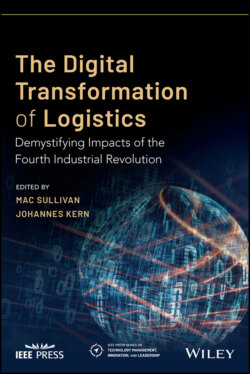Читать книгу The Digital Transformation of Logistics - Группа авторов - Страница 81
RPA as a Solution
ОглавлениеAutomation has been placed at the forefront of the digitalization trend that is sweeping across the business community. There are several forms of automation, but in this case, we will be evaluating robotic process automation (RPA) as an emerging technology that is garnering substantial attention in the logistics community. According to the Institute for Robotic Process Automation, “Robotic process automation is the application of technology that allows employees in a company to configure computer software or a ‘robot’ to capture and interpret existing applications for processing a transaction, manipulating data, triggering responses and communicating with other digital systems” (Institute for Robotic Process Automation 2020). Research into the application of RPA shows that this technology is enabling automation in areas that had in the past shown too expensive to do so (Barnett 2015). The cost of virtual RPA robot worker is between 10 and 19% of a local full‐time employee (FTE) and roughly 33 and 50% of an FTE in an outsourced location (Prangnell and Wright 2015; Slaby 2012; Willcocks et al. 2015). Considering such price points, it seems that there is a potential for substantial savings over the way companies are currently operating. Therefore, in this chapter, we will investigate the use case of automating white‐collar documentation work using RPA.
To address the subject of RPA, an explanation of what the technology is and how it fits into the context of an international logistics company is initially needed. A logistics company typically has large departments of clerks who are creating documents like bills of lading or invoices. These documents are often created by directly copying parsed information from documents received from clients and pasted into new templates. By mimicking the actions of these clerks, it is feasible that a properly trained automated technology could take over this task. Specifically, an RPA bot works in the presentation layer of a system and acts like a human using the same inputs that a mouse and keyboard would by clicking and typing (Slaby 2012). An RPA bot does not necessarily live within a source system or software like Microsoft Word or SAP's enterprise resource planning (ERP); it lives on top of infrastructure like a Windows desktop (Aguirre and Rodriguez 2017). This allows the bot to cross multiple software and reduces the need for integrations and the risk of disrupting system logic. By not living in the source code or database, RPA bots are much more like a human worker and do not require the user to have a lot of coding skills as opposed to traditional system‐to‐system automation (Asatiani and Penttinen 2016; Slaby 2012).
